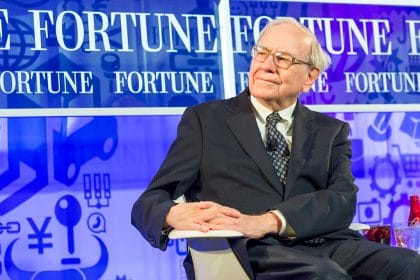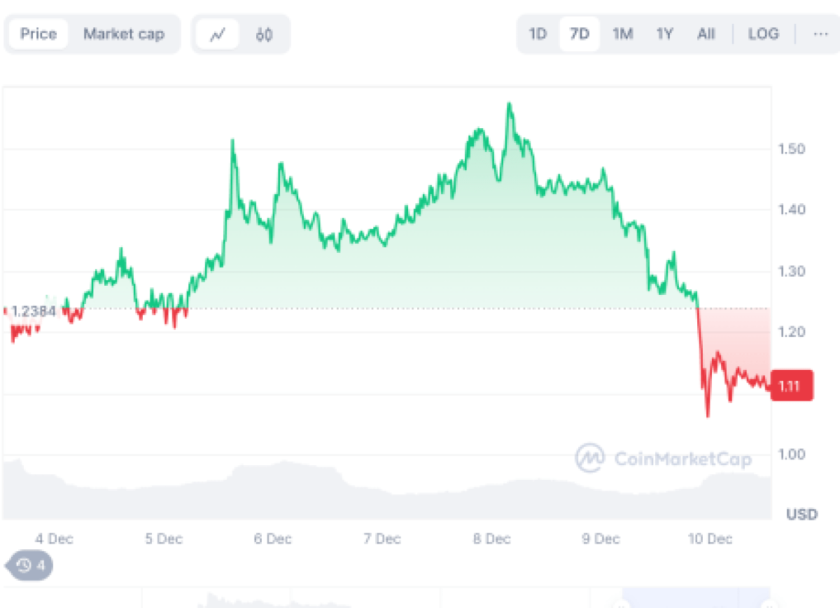Berkshire Hathaway’s cashing up in an environment which in the past has seen it invest heavily counter-cyclically – some of Buffett’s biggest and most profitable plays have been during times of crisis – and its foray into a gold stock underscores his risk-aversion.
We all have our own opinion regarding Warren Buffett. However, whether it’s positive or not, we cannot deny he is one of the greatest investors of all times. Sometimes Buffett might seem a bit conservative and traditional if to look through his portfolio but, on the other hand, he manages to keep his wealth in times when the biggest winners are becoming losers.
The CEO of conglomerate Berkshire Hathaway (NYSE: BRK.A)(NYSE: BRK.B) managed to grow his net worth from around $10,000 to $80 billion since 1950s and has delivered a compound annual return for Berkshire Hathaway’s shareholders of 20.3% since 1965. A $100 investment in Berkshire back in 1965 would be worth more than $2.5 million today.
Be it as it may seem, his success is mostly associated with his capability to see a business that has sustainable return to the investment and he was always pretty much stubborn when it comes to holding on his assets for a longer period of time. Even though he might be a traditional investor (crypto is still a big no, no to Warren) he is not following that tradition when it comes to diversification. You remember that one piece of advice all brokers will give you – don’t put all the eggs in the same basket? Well, Warren believes that if you know what you are doing, you actually have to put all of your assets in one place.
As of the closing bell last week, 92% of Buffett’s more than $240 billion in invested assets were concentrated in just three sectors.
Apple and Tim Cook as Greatest Points in Buffett Portfolio
We have a surprise. Even though Buffett was traditional old 80’s investors, today his 49.33% stake is tied up in a single stock: Apple (NASDAQ: AAPL). So-called Oracle of Omaha recently explained he doesn’t think of Apple as a stock. “I think of it as our [Berkshire Hathaway’s] third business,” behind insurance and railroads.
And still, he gets to stay conservative grandpa. He wasn’t hooked on the Apple’s technology ties but at its crazy branding power as well as on Apple’s CEO Tim Cook, who’s in the process of transforming his company from being product-oriented to service-focused.
For more than one quarter, we have been witnessing services and wearables grow at a speed of light on a yearly basis. Services are an especially higher-margin segment that should lead to fewer revenue irregularities for Apple over time.
Additionally, the tech fulcrum managed to do a great job when it comes to returning capital to shareholders, which Buffett simply adores. Apple has been borrowing at historically low rates to fund aggressive share repurchases, and currently, the company is paying out one of the largest nominal dividends in the U.S. at more than $14 billion a year.
Bank of America as an Aspiring Lover
The second favorite sector that takes a significant part in the portfolio of Warren Buffett is the financial one, it now represents “only” 29% of Berkshire Hathaway’s portfolio. The 32.02% financials tallied at the end of June marked a nine-year low, while the current 29.05% represents the sector’s smallest allocation since the market bottom during the first quarter of 2009.
The logical question is how it happened that the financial sector goes so much down. There are two answers.
Since March 2020 when the coronavirus pandemic hit the hard path, the financial sector has majorly underperformed. As Apple has been growing by double digits since then, Wells Fargo (NYSE: WFC) for example went down 56% year-to-date and has declined below its March 2020 bottom.
The financial sector traditionally mostly depends on steady economic growth in order to drive loan activity and higher interest income. During recessions as is the current one, the Federal Reserve’s dovish monetary policy pushes lending rates down, thereby hurting interest income for the likes of Wells Fargo and its peers.
Berkshire Hathaway revealed this month it had dumped nearly $6 billion of its U.S. bank holdings, including a majority of its JPMorgan Chase & Co and Goldman Sachs (NYSE: GS) shares and about a quarter of its holding in Wells Fargo. It did, however, add to its stake in Bank of America.
Bank of America (NYSE: BAC) has been a surprisingly popular add for the Oracle of Omaha in recent weeks. The most interest-sensitive of all bank stocks, and therefore, it should be among the first to benefit when lending rates start rising again. It also did an amazing job when it managed to keep control of the noninterest expenses by focusing on mobile banking solutions and closing some of its physical branches.
Consumer Staples Stock as Ex-Wife
Finally, Warren has 13.56% of his stakes in so-called consumer staples stocks (i.e., companies that provide essential products like packaged food and beverages). The explanation in a smaller percentage can lay in the fact that there is a relatively low-interest-rate environment we’ve been privy to now for more than a decade. Consumer staples are usually mature, slow-growing businesses that benefit when value stocks are in favor.
Another consideration, Buffett still remembers one of his worst investments in the portfolio recently: Kraft Heinz (NASDAQ: KHC). The company took more than $15 billion goodwill writedown in February 2019 on its Kraft and Oscar Mayer brands, or that it’s been financially constrained by nearly $29 billion in total debt.
Experienced creative professional focusing on financial and political analysis, editing daily newspapers and news sites, economical and political journalism, consulting, PR and Marketing. Teuta’s passion is to create new opportunities and bring people together.




